Ask the Experts | The Family Handyman
Get the answer to this and other interesting lawn questions from our bird and garden experts.
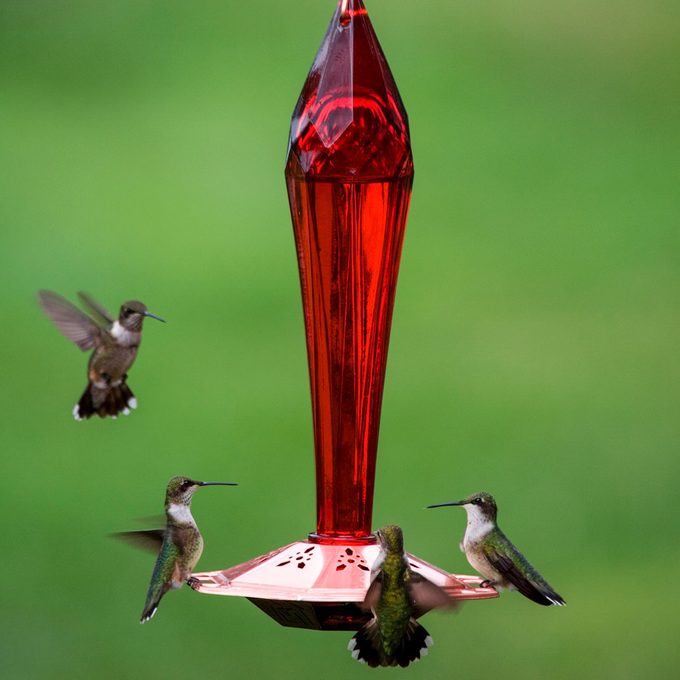
Q: Is information technology necessary to boil the sugar-water mixture for hummingbird feeders? I just stir until the carbohydrate is dissolved. — Amy Kernes, Brea, California
Kenn and Kimberly: Opinions differ on the importance of boiling the mixture. We e'er do it to neutralize some impurities that might exist in the h2o or sugar. Besides, carbohydrate dissolves more easily in hot water. Simply as shortly equally the feeder is outdoors, contaminants will become into the water anyhow, brought by hummingbirds, insects or but a cakewalk. So at best, boiling the mixture keeps it fresh a fiddling longer. If your water is good and your time is limited, washing the feeder thoroughly and often is more important than humid the carbohydrate-water mixture.
Plus: Acquire why the rufous hummingbird is the toughest bird on the block.
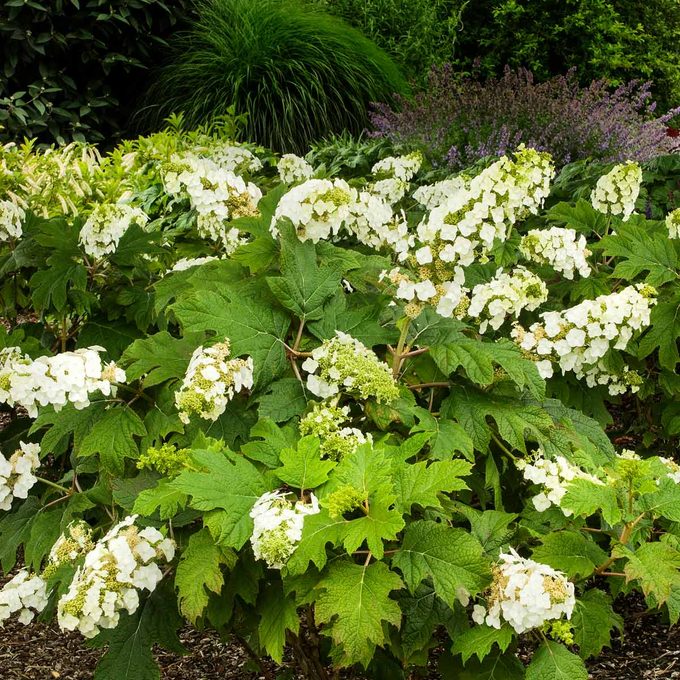
Q: I accept a 7-year-quondam oakleaf hydrangea in a shaded location. Information technology grows a lot of healthy foliage that I accept to prune regularly, simply it bloomed only one time or twice. Why do you think that is? — William Stovall, Charleston, South Carolina
Melinda: It'due south all well-nigh the timing when pruning this and other hydrangeas. Oakleaf hydrangeas produce flower buds the year earlier they flower. Keep pruning to a minimum to maximize the floral brandish. Remove only the damaged and wayward branches each twelvemonth as needed. This helps command the plant'south size while encouraging it to blossom. Heavy pruning stimulates growth and results in a larger plant that needs additional pruning. Selective pruning leaves you with more than stems with intact flower buds for a improve bloom the post-obit year.

Q: I took this photo nearly Scottsdale, Arizona. I retrieve it's an immature male, but is it a black-chinned or an Anna'due south? — Steve Dummermuth Jr., Cedar Rapids, Iowa
Kenn and Kimberly: Immature male person hummingbirds are tricky to identify, considering they're oftentimes somewhere between the advent of a female person and an adult male. We recall this is a young male person Costa's hummingbird for several reasons. The night outline of the pharynx patch, extending down and back below the eye, is very typical of Costa's at this phase, and so is the patch of pinkish royal on the lower pharynx. Also, the breast and sides are articulate whitish—most Anna's and black-chinneds show more of a gray-green wash on the sides.
Check out these 9 expert tips for alluring hummingbirds to your backyard.
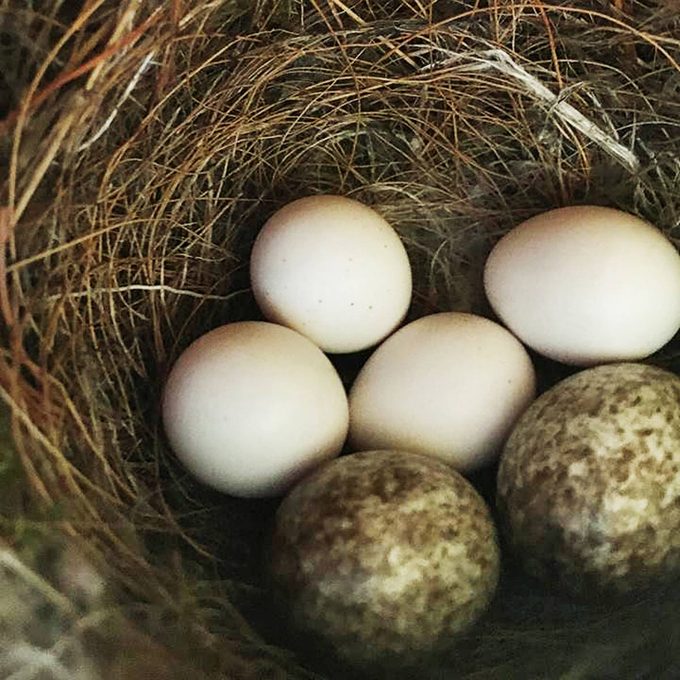
Q: My shed was left open and I saw an eastern phoebe slipping out. Inside was a nest with four white eggs and two speckled eggs. What kind of bird lays eggs and leaves them in another nest? — Patricia Bourgeois, Douglas, Massachusetts
Kenn and Kimberly: The four white eggs in your photograph were laid by the phoebe, but a female brownish-headed cowbird is responsible for the 2 speckled eggs. Cowbirds are brood parasites and never raise their own young. Instead, they lay their eggs in the nests of other songbirds, leaving the unwitting foster parents to hatch the eggs and feed the young. Eastern phoebes build open nests that are easy to find, then they are frequent targets for cowbirds. In some parts of their range, as many every bit one in four phoebe nests contains cowbird eggs.
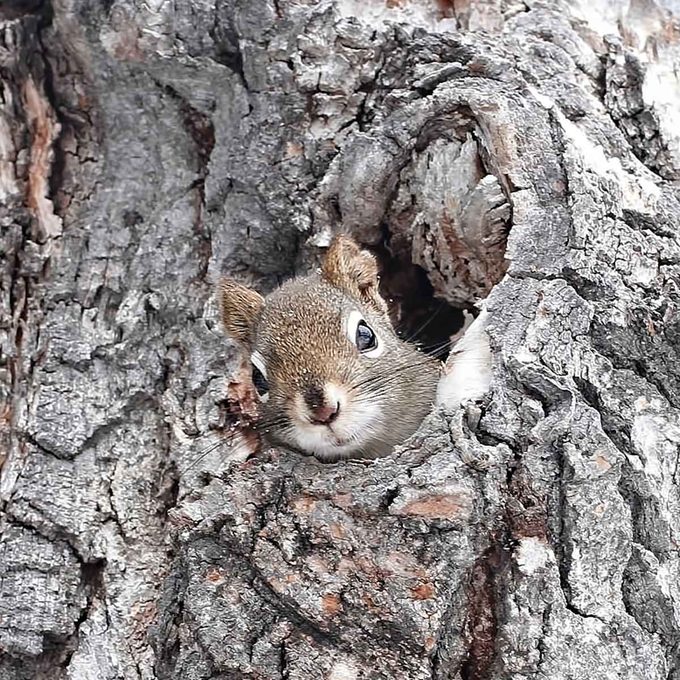
Q: Exercise you have any tips for preventing squirrels from digging in my potted plants? I've tried mothballs and repellent sprays, but nada seems to work. — Mary Rumbaugh, Midland, Michigan
Melinda: Squirrels are persistent and often destructive pests of container plantings. They have grown accustomed to humans and have all day to find means to overcome barriers. It will take a variety of tactics and persistence on your function to keep them away. Try treating your plants with cayenne pepper as you plant, or use scare tactics, like motion-sensitive sprinklers and pinwheels. Cover new plantings with fine netting to allow air, light and water through merely discourage earthworks. The squirrels may lose involvement and movement on. One time plants are established, remove the covering and monitor for squirrel harm.
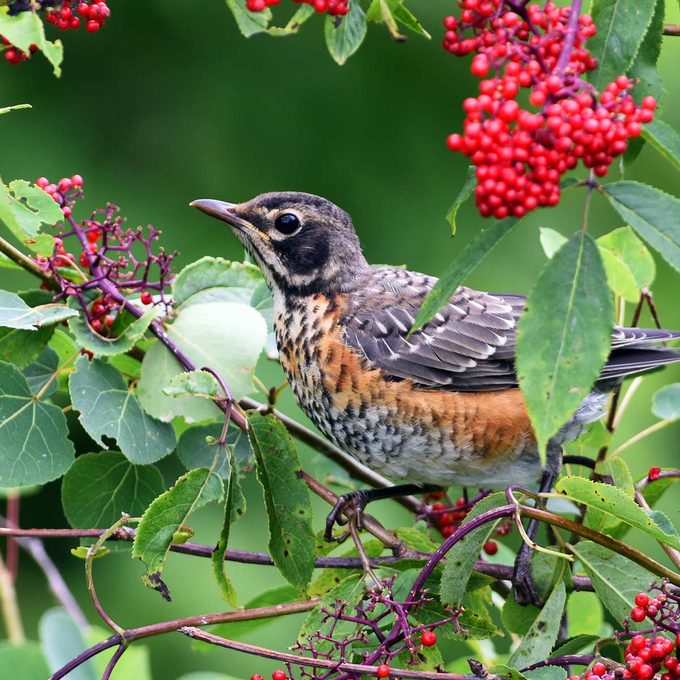
Q: I came across this wild berry bush-league that several types of birds, including rose-breasted grosbeaks, cedar waxwings and a juvenile robin, were feasting on. What kind of establish is this? — Doug Gimler, Morgan, Vermont
Melinda: Birds and mammals love the cherry berries and pollinators appreciate the creamy white flowers of this native red elderberry (Sambucus racemosa). There is some debate but the fruit is said to be enduring and slightly toxic to humans unless cooked. This elder typically grows 12 to 15 feet alpine and wide. It prefers moist soil and full sun only tolerates some shade.
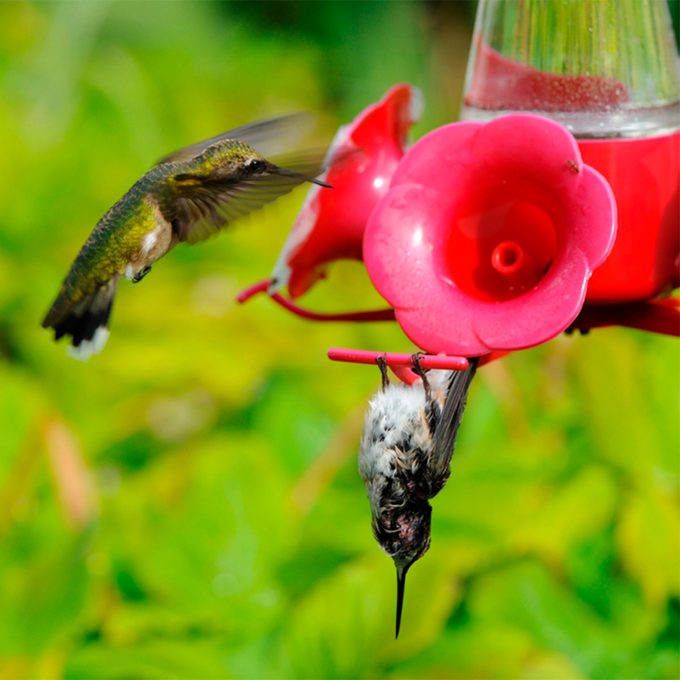
Q: 1 morn, a female hummingbird landed on the feeder, slowly leaned back and eventually ended upward upside down. She ignored the other birds and, afterwards a few minutes, flew away. What causes this beliefs? — Donna Jenkins, Chesapeake, Virginia
Kenn and Kimberly: This odd behavior seems to happen considering hummingbirds have weak feet and extreme variations in free energy levels. Hummingbirds enter torpor (lowered breathing and heart charge per unit) to conserve energy. This usually happens on cold nights, but sometimes they go into a torpid land during the twenty-four hour period. When they're sitting, their feet automatically clamp down, but on a smooth perch, they may slip and wind upward hanging upside down. Ordinarily this doesn't last long and the bird isn't whatsoever worse off when it awakens.

Q: What type of dragonfly is this? It frequents our lawn, and nosotros've never seen a blood-red dragonfly. — Chris Fisher, Vancouver, Washington
Kenn and Kimberly: You're right, crimson is not a common color for dragonflies. This dazzler is chosen a flame skimmer, and you're lucky to have it in your one thousand—although flame skimmers are common in some parts of the Due west, they enter the country of Washington only in your area, simply north of the Oregon edge. Some smaller types of red dragonflies, called meadowhawks, are more widespread, so you might run into those elsewhere in Washington.
Kimberly and Kenn Kaufman are the duo behind the Kaufman Field Guide series. They speak and lead bird trips all over the globe.
Melinda Myers is a nationally known award-winning garden expert, Telly/radio host and author of more than twenty books.
Bank check out more amazing backyard manufactures fromBirds & Blooms.
goldsteinvatte2000.blogspot.com
Source: https://www.familyhandyman.com/article/why-do-hummingbirds-sometimes-hang-upside-down/
0 Response to "Ask the Experts | The Family Handyman"
Post a Comment